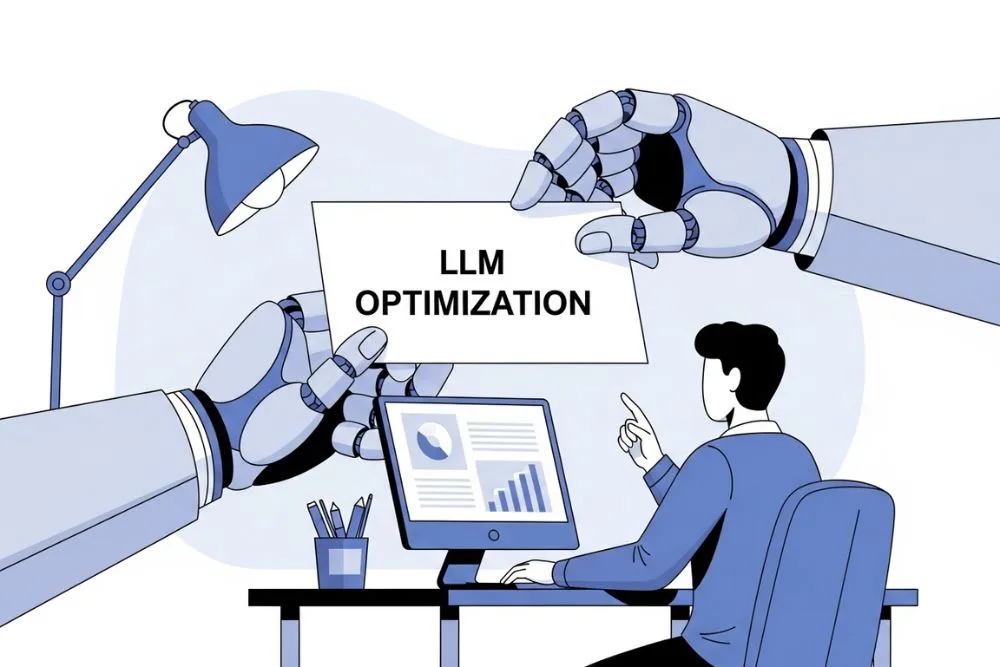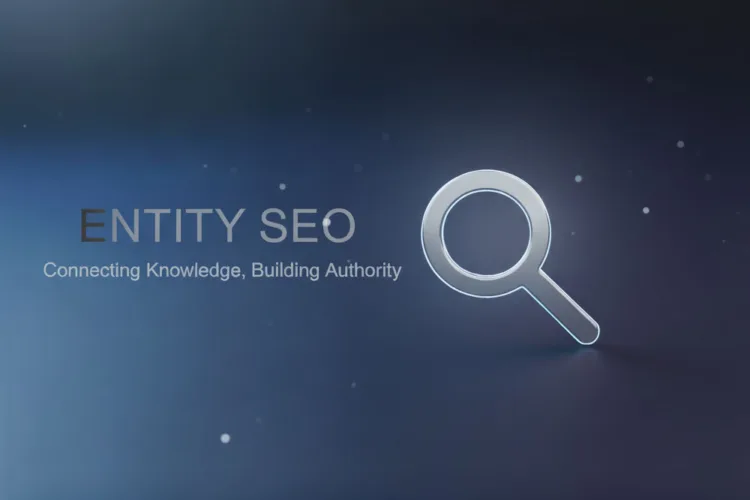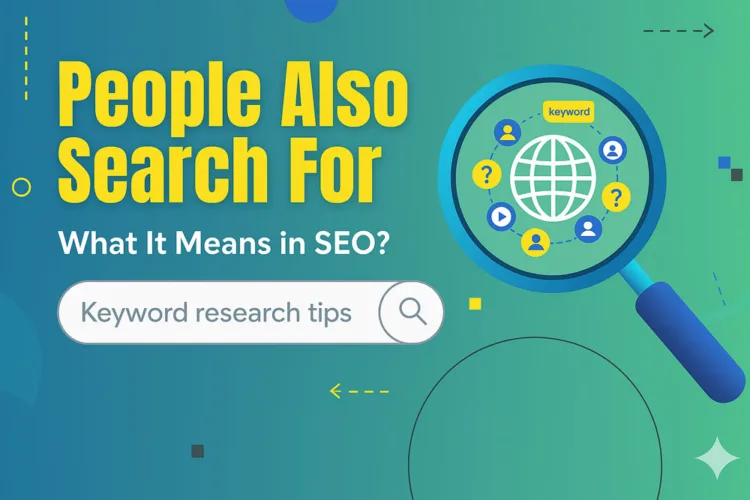
Content will be an important factor in digital marketing, while technology determines how it is delivered and consumed. As a result, optimizing content for Language Learning Models (LLMs) has become an essential strategy. If you’re making articles, blog posts, or E-commerce content, integrating your strategies with the capabilities of LLMs can make a significant difference in visibility and engagement. This article highlights the core principles of LLM optimization, offering actionable insights to ensure your content consistently shows up in LLM responses. From understanding what LLM optimization involves to learning how to adjust your strategies effectively, you’ll gather the tools and knowledge required to flourish in this field.
What Is LLM Optimization
LLM optimization is the process of customizing your content to be effectively analyzed, understood, and utilized by language learning models like GPT-3, BERT, and others. These models are extensively used to generate human-like text responses, analyze sentiments, and perform various linguistic tasks. By optimizing your content for LLMs, you not only improve the chances of your information being retrieved accurately but also enhance its relevance and quality from the perspective of these models.
Think of LLM optimization as a link between traditional SEO and the complex requirements of artificial intelligence. While conventional SEO focuses on keyword density and backlinks, LLM optimization looks for deeper integration with the semantic and contextual understanding capabilities of AI. This requires you to focus on creating content that is rich in meaning, contextually relevant, and technically sound in a way that matches well with the processing power of LLMs.
The Importance of Optimizing Content for LLMs
Optimizing content for LLMs is essential in an era where traditional search engines are integrated with AI-driven models. This integration enables more sophisticated searches and content delivery, making it important for creators to adapt. The importance lies in several key areas:
- Enhanced Content Retrieval: Optimized content is more likely to be retrieved by LLMs, ensuring it reaches the intended audience effectively.
- Increased Engagement: Content that matches the preferences and requirements of LLMs often sees higher user engagement rates.
- Strategic benefit: As more businesses adopt AI-driven strategies, LLM optimization can provide a competitive edge, setting you apart from those depending on traditional methods.
By optimizing for LLMs, you not only stay relevant in the digital field but also future-proof your content strategy against the growing use of AI in content curation and delivery. Here are some tips to ensure your content shows up in LLM responses.
1. Identifying Your Target Audience
Understanding who your audience is a cornerstone of any content strategy, including one that incorporates LLM optimization. When you clearly identify your target audience, you can customize content that connects well with their needs and preferences, which is important for how LLMs will interpret and present your information.
Start by creating detailed audience profiles that include demographics, interests, preferences, and online behaviors. This data helps inform the type of content that will be most engaging and relevant to your audience. Use platforms such as Google Analytics, social media insights, and customer surveys to gather useful information. The more precise and meet your audience definition, the better you can meet their needs, increasing the chance that LLMs will favour your content in relevant contexts.
2. Researching Relevant Keywords and Topics
Keyword research remains the foundation for both traditional SEO and LLM optimization. However, when it comes to LLMs, the focus changes to understanding the semantic connections between words rather than just their frequency. This involves identifying not only relevant keywords but also understanding the broader topics and their associated subtopics.
Employ tools like SEMrush, Ahrefs, and Google Keyword Planner to identify potential keywords and phrases. Furthermore, explore topic clusters that encapsulate these keywords, ensuring your content is context-rich. Using a focus on themes over singular keyword saturation improves LLM comprehension and relevance.
3. Creating High-Quality, Engaging Content
The core of LLM optimization depends on producing high-quality, engaging content that fascinates your audience and holds their interest. Quality content is multidimensional, combining accuracy, readability, informativeness, and creativity.
Begin by ensuring your content provides value, whether through insights, solutions, or entertainment. Use a narrative approach to make complex ideas more relatable and engaging. Visual elements, such as infographics and videos, can also enhance engagement and support clarity across varied audiences.. Remember that compelling content invites interaction, sharing, and discussion, elevating its profile in the digital ecosystem and increasing visibility in LLM responses.
4. Ensuring Accuracy and Relevance in Information
Accuracy and relevance are non-negotiable pillars of effective content, particularly for LLMs, which succeed on reliable and relevant data. Inaccurate or outdated information diminishes trustworthiness and could lead to negative impacts on your content’s visibility and reputation.
Ensure your data is collected from credible sources and verified for accuracy. Providing citations or links to original studies and data sources further strengthens your content’s reliability. Moreover, maintain relevance by frequently updating content to integrate with the latest industry developments and trends.
A strict fact-checking process before publication can prevent the dissemination of false information. The more LLMs can trust the precision of your content, the more likely they are to prioritize it in response generation.
5. Utilizing Metadata Effectively
Metadata plays an important role in LLM optimization, providing essential context that helps models understand and categorize your content efficiently. Metadata includes elements like title tags, meta descriptions, alt text, and structured data that enhance semantic insight.
Optimize your metadata by incorporating relevant keywords naturally, ensuring it reflects the content’s core themes without appearing spammy. Title tags should be concise yet informative, providing a clear indication of the page’s content. Meta descriptions, while not a direct ranking factor, influence click-through rates by offering a snapshot of the content’s relevance to users.
Utilize structured data (such as JSON-LD) to provide detailed information about your page, aiding search engines and LLMs in understanding context and relevancy more deeply.
6. Monitoring and Analyzing Performance
To optimize effectively, regular monitoring and analysis of your content’s performance are essential. This involves evaluating metrics like page views, engagement rates, conversion rates, and more to understand how well your content meets its objectives.
Use tools like Google Analytics, Moz, or HubSpot to track these various metrics. They can provide insights into how users interact with your content, which pieces are most effective, and where there is room for improvement. Ready with this data, you can make informed decisions to refine your content strategy further.
Regularly compare your performance metrics against benchmarks and competitors. This analysis allows you to understand the strengths and weaknesses in your LLM optimization efforts, facilitating timely adjustments and sustaining content visibility.
7. Adapting and Improving Content Strategies
The dynamic nature of digital content demands flexibility and adaptability in your content strategies. Adapting involves both reactive and proactive measures to maintain relevance and effectiveness in the face of changing algorithms, audience preferences, and technological advancements.
Be informed about the latest developments related to LLMs and content optimization. Engage in continuous learning through industry reports, webinars, and expert opinions to keep your strategies connected with best practices. Moreover, be open to experimenting with new formats, tools, and techniques that may offer competitive advantages. Encourage feedback from your audience to gain insights into their preferences and customize your strategies accordingly. Adapting not only includes content updates but also refining distribution channels and engagement techniques to ensure your content remains visible and impactful.
LLM optimization is a delicate and evolving field that requires a strategic and informed approach. By understanding the intricacies of LLMs and integrating your content creation and optimization efforts accordingly, you can improve the visibility and impact of your information. Focus on quality, accuracy, and relevance while remaining adaptive to future changes, and you’ll be well-prepared to make your content consistently available and valuable in the field dominated by advanced AI models.



